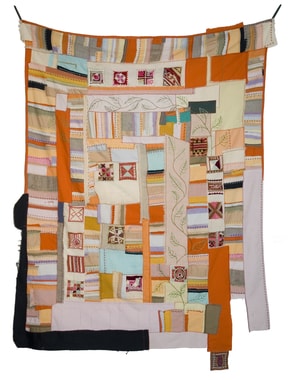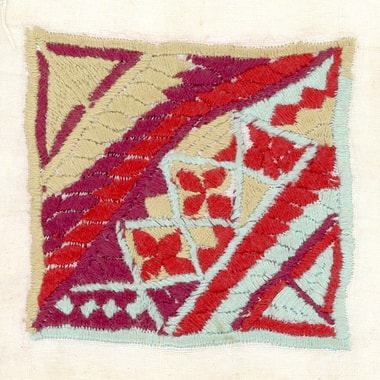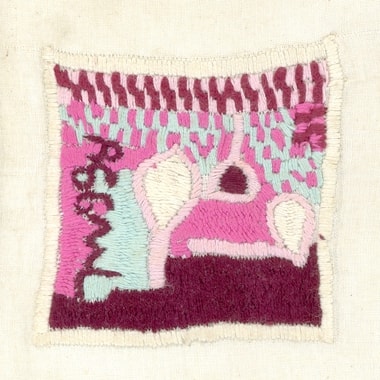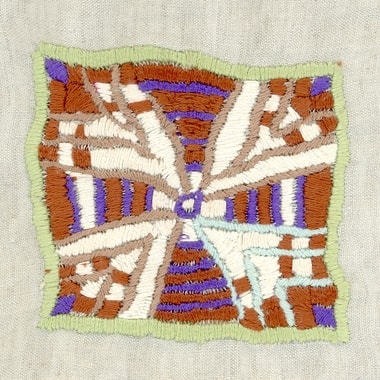Pascale Goldenberg
„Bricolage Gardens“
In Afghanistan there is traditional patchwork of a very special kind made by Turkmen women that combines two processes: cross-stitch on narrow fabric strips and the patching together of fabric scraps. This type of work is extremely rare. Such patchworks were made exclusively to decorate walls, either stuck directly on the still damp mud walls or hung on the wall with two small loops attached to the corners of the work. They rarely have a reverse side and the seams are open. Presumably some women specialized in cross-stitch producing strips by the yard, while others did the sewing, joining the strips and fabric pieces by hand or on the sewing machine; in other words this kind of textiles is made in a two-step process. These Turkmen textiles fascinated me and inspired my own patchwork.
With some of my work I start in a similar fashion, first joining narrow and wider strips of cloth into larger pieces, using exclusively fabrics with a history of travel, leftovers from the fabrics that are sent from Freiburg to Kabul for the women to embroider their squares on. Three months later the embroidered fabrics are returned and cut up, so that the single squares can be sold. I collect the cut-offs, strips of various widths, and these waste products are the raw material of my work. Not a single bit of my patchwork is new; the fabrics have already travelled from Freiburg via Kabul to Laghmani and back again. I then embroider my patchwork with programmed stitches on my sewing machine, so it is not strips that I embroider, but large pieces made from them. Rather than cross-stitch by hand I use ‘high-tech’ machine stitches. My work reflects the principles of recycling.
Afghan women are skillful embroiders, but they are usually not very good at sewing. Some sew their own clothes, but don’t care much if a collar is lopsided, or one side shorter than the other. It is the same with the men: when they repair a door, for example, they just want it to last for the next day, that’s all that is required. Their work could be described as a sort kind of bricolage. The only thing made to last are the adobe houses that are expertly built. I drew on this background information for my own work. Rather than sewing neatly in a European fashion, I ignored the strict rules of the craft and cobbled my patchwork together as Bricolage Gardens.
I embarked on the project as an adventure, without blueprints or plans to follow, deliberately following the Turkmen women’s way of working. This project started three years ago without anybody knowing what would come out of it and we still have no idea where it will lead us.
Text by Pascale Goldenberg











































